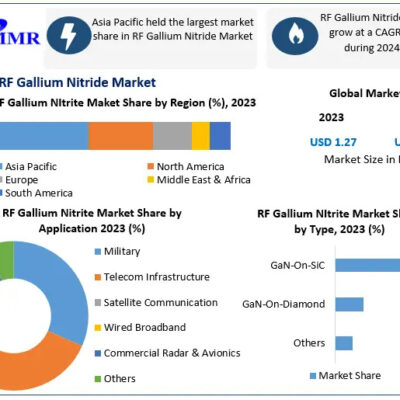In today’s ever-evolving work culture, companies are rethinking traditional office setups. Gone are the days when every employee needed a dedicated desk or office space. Instead, hot desking solutions are gaining momentum as a smart, efficient way to manage workspace — especially with hybrid work models, remote teams, and flexible schedules becoming the norm.
If you’re curious about what hot desking really means, how it benefits your business, and what makes a great office hot desking solution, this guide will walk you through everything you need to know.
What is Hot Desking?
Hot desking means sharing desks among employees rather than assigning each person a fixed workstation. When you arrive at the office, you pick any available desk instead of having one reserved just for you.
This flexible approach can apply daily, weekly, or as needed. It’s especially useful in offices where people spend part of their time working remotely, traveling, or meeting clients outside the office.
Why Are Office Hot Desking Solutions Popular?
1. Maximizing Office Space
Companies often pay for more desks than employees actually use. With hot desking, you reduce wasted space because desks are shared. This can lead to significant savings on rent and utilities.
2. Supporting Hybrid Work
Hybrid work means employees split time between home and office. Hot desking accommodates this fluid schedule perfectly, since not everyone needs a desk every day.
3. Encouraging Collaboration
When employees sit in different spots on different days, they’re more likely to interact with a wider range of colleagues. This can boost creativity and teamwork.
4. Reducing Costs
Fewer desks mean lower overheads—whether rent, cleaning, or office supplies. Plus, it reduces the need for costly private offices.
Essential Features of Good Hot Desking Solutions
When choosing or designing an office hot desking system, consider these key features:
1. Booking System
A reliable booking platform (app or web-based) lets employees reserve desks in advance, avoiding last-minute scrambles. It can show available desks, facilities nearby, and sometimes even desk preferences (quiet zones, window seats, etc.).
2. Flexible Desk Setup
Desks should be easy to clear and share. Avoid cluttered or overly personalized spaces. Provide lockers or storage for personal items.
3. Strong IT Infrastructure
Reliable Wi-Fi, plenty of power outlets, and access to shared printers/scanners are a must. The tech should support quick login and logout to avoid delays.
4. Clear Policies
Employees need guidelines on desk usage, hygiene, and booking etiquette to keep things running smoothly.
5. Sanitization Stations
Especially post-pandemic, having cleaning wipes or hand sanitizer nearby encourages a healthy workspace.
Types of Hot Desking Solutions in Offices
1. Free-for-All Hot Desking
This is the most basic model: employees find any free desk when they arrive. It’s flexible but can lead to confusion or overcrowding.
2. Assigned Hot Desking
Employees book or are assigned desks on specific days or weeks. This balances flexibility with predictability.
3. Zoned Hot Desking
Offices are divided into zones based on function—quiet areas, collaboration zones, phone booths. Employees pick desks depending on the task.
4. Hybrid Hot Desking
Combines traditional assigned desks for some with hot desking for others. Often senior staff have fixed spaces, while others share.
Implementing Hot Desking: Best Practices
1. Communication is Key
Inform employees about how hot desking works, benefits, and expectations. Address concerns like privacy and desk availability upfront.
2. Start Small
Pilot hot desking with one department or floor. Gather feedback and tweak the system before scaling.
3. Invest in Technology
Choose a simple desk booking app that employees can use easily on their phones or computers.
4. Design Thoughtfully
Consider desk layout, ergonomics, lighting, and noise levels. Provide a mix of workspaces—quiet corners, collaborative tables, standing desks.
5. Encourage Clean Desk Policy
Employees should clear personal items daily. Provide lockers for storage and supplies like wipes for quick cleaning.
Benefits of Office Hot Desking Solutions
1. Cost Savings
By optimizing space, businesses can cut down office rent and reduce the need for expansion.
2. Flexibility & Employee Satisfaction
Employees enjoy freedom to choose their workspace style. It supports remote work and work-life balance.
3. Improved Collaboration
Changing desks encourages networking, knowledge sharing, and innovation.
4. Better Space Utilization
Hot desking helps offices make the most of their physical footprint, reducing wasted real estate.
Challenges and How to Overcome Them
1. Lack of Personal Space
Some employees feel less comfortable without a permanent desk. Solution: provide lockers and encourage personalization during the day.
2. Desk Availability Issues
Busy days can make it hard to find desks. Use booking apps and data analysis to manage capacity.
3. Distractions
Some might find hot desking noisy or disruptive. Design quiet zones and provide noise-cancelling headphones.
4. Health and Hygiene Concerns
Ensure cleaning protocols and provide sanitizers to keep shared spaces safe.
Hot Desking and Company Culture
Hot desking impacts company culture significantly. It breaks down departmental silos by mixing seating arrangements. This can foster a more open, inclusive atmosphere.
However, it also requires building trust and respecting shared spaces. Leaders should encourage collaboration but also acknowledge different work styles.
The Future of Hot Desking: Trends to Watch in 2025
-
AI-Driven Desk Management: Smart systems predicting peak usage and automatically suggesting desks.
-
Integration with Wellness Programs: Workspaces that adjust lighting, air quality, and ergonomics based on user preferences.
-
Sustainability Focus: Eco-friendly materials and energy-saving features becoming standard.
-
Hybrid Models Becoming the Norm: More offices mixing hot desking with dedicated desks and remote work flexibility.
Final Thoughts
Office hot desking solutions are here to stay. They offer a cost-effective, flexible way to manage modern workspaces while boosting collaboration and employee satisfaction.
Success depends on thoughtful implementation—combining the right tech, clear policies, and a culture that embraces flexibility.
If your business is ready to embrace the future of work, hot desking might just be the smartest move you make.





